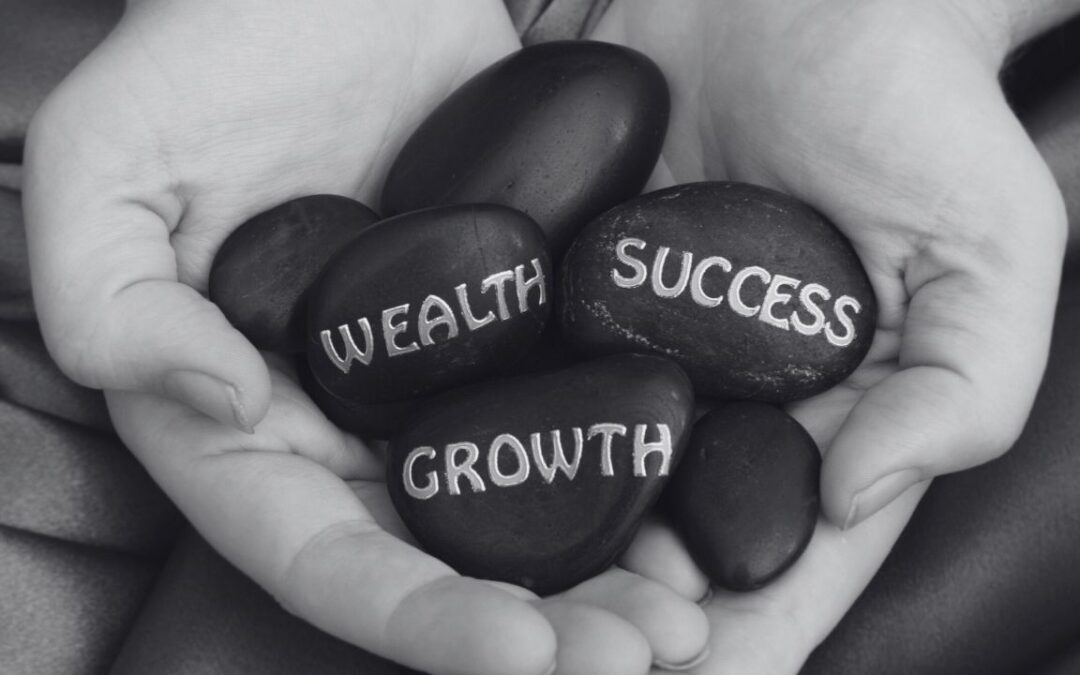One of the first financial concepts children are taught is that it’s better to save than to spend. However, is this always a good policy to follow as you start to think about building wealth?
This blog shares the importance of velocity of money when building personal wealth using the strategies taught by George Antone and the Fynanc team.
What is “velocity of money”?

Velocity of money refers to the speed at which money circulates through the economy. In personal finances, velocity of money refers to the flow of money in your life and is a critical concept that can impact your financial well-being.
When you earn money, you have a choice: you can spend it or save it. If you spend it, the money starts circulating through the economy, changing hands from one person to another. This circulation creates more economic activity and growth.
On the other hand, if you save your money, it doesn’t circulate through the economy. The velocity of money slows down, resulting in lower economic activity. By holding onto your money, you might decrease your risk of losing your money in a volatile market. However, every year your money will actually decrease in value as the forces of inflation eat away at your purchasing power.
What is “purchasing power”?

Purchasing power is your ability to buy goods and services with your available financial resources. It is essentially a measure of how much you can buy with your money at any given time.
The concept of purchasing power is influenced by inflation, which is the rate at which the general level of prices for goods and services is rising. As inflation increases, the purchasing power of your money decreases, meaning that each unit of currency can buy fewer goods and services.
Purchasing power is important in personal finances because it directly affects your ability to meet your needs and wants. When your purchasing power is lowered due to inflation, you may struggle to maintain your current standard of living. This directly affects the velocity of money, as people will have less disposable income to spend. As people start spending less money, the velocity of money slows, resulting in weaker economic activity.
When your purchasing power is high, you may be more likely to spend your money, increasing velocity of money. On the other hand, when your purchasing power is low, you may become more cautious with your spending and hold your money for longer periods of time. This can result in a slower velocity of money, which can lead to decreased economic activity.
How does velocity of money affect your personal finances?
When applied to your personal finances, taking advantage of velocity of money to build your personal wealth is a powerful financial strategy that many investors neglect.
If you hold onto your money, you only stand to benefit from the standard interest rate that is applied by the financial institution where you hold your savings. A low-risk, low-interest savings account will rarely keep up with the forces of inflation.
When you use your money to acquire growth and income-generating assets, you stand a much greater chance of increasing your return on investment to outpace inflation. You increase your opportunity to grow your purchasing power over time.
Velocity of money in action

Let’s look at an example of how velocity of money affects your financial decisions:
Imagine that you inherit $250,000. You place this capital in a standard savings account for 10 years at the current average percentage yield (APY) of 0.24%.
At the end of the ten-year period, your investment will be worth $256,071, meaning that you will have only made $6,071, even when considering compound interest. While it may seem like you have made some headway, this figure does not take into account the effects of inflation over the investment period.
The current inflation rate, as published by the Labor Department, is 6%. If this inflation rate remains constant over the ten-year investment period, your $256,071 will only be worth $240,707 when you cash out your money ten years later – $9,293 less than your initial investment amount.
This happens to many investors who don’t understand how to take advantage of velocity of money when building wealth.
Now, let’s say that you take that same $250,000 and purchase a house. You may be able to rent the property for 1% of the property value, or $2,500, per month over 10 years. This means you can generate $30,000 per year on your rental property (if you never increase your rental amount even though the value of your property will increase over this time).
Over ten years, you could make up to $300,000 dollars from your rental property. Even though you still need to pay taxes and maintenance costs on your property, and you may not have paying tenants over the entire term, you are likely to make more money spending your $250,000 on the right asset than holding onto it in a low-interest savings account.
In addition, at the end of the 10-year period, you will still have an asset that has accrued in value and can potentially sell for more than your initial $250,000 investment.
Scaling your growth
Once you unlock the power of velocity of money by spending your money in a way that accelerates growth, you can start scaling this strategy.
With the additional money you make from your income-producing asset, you now have the purchasing power to acquire more income-producing and growth assets, such as stocks, bonds, more properties, etc. As your portfolio of assets grows, so will your purchasing power, allowing you to take advantage of additional investment opportunities.
You can see how this approach can quickly help you to build a “wealth machine” that gains momentum as you spend your way to wealth.
Finding the balance in your wealth-building strategy
When looking at the effects of velocity of money on your personal finances, it’s easy to see why people who spend their money wisely tend to get wealthier over time. While people who try to save their way to retirement often come up short. It’s also clear that the traditional ‘saving’ approach is one of the least effective ways to build wealth.
However, we have all heard of investors who have lost everything in a bad deal and ended up in a more compromised position than some conservative savers. There is also the risk of overspending or investing in assets that don’t yield the returns you thought they would.
Therefore, the question remains: how do you find the right balance between debt, spending your money, and holding on to some cash to ensure that you build your wealth while limiting risk?
The answer is in developing a custom plan that fits your unique lifestyle goals and financial situation. This is what the Fynanc team does for hundreds of students who are on the path to building wealth.
If you are interested in learning how to incorporate velocity of money in your own financial journey:







